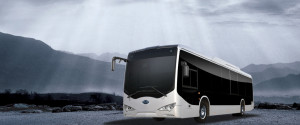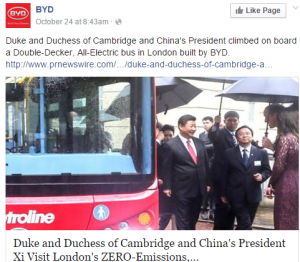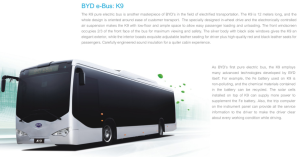#2 IN A SERIES: LITHIUM
This series of blogs highlights the specific minerals extracted from the Tibetan Plateau, despite the protests of Tibetan communities determined to protect their livelihoods, sacred mountains and pilgrimage routes. This series also introduces, to Tibetan readers, the new conflict minerals regulatory regime which effectively bans the entry of conflict minerals into the global commodity supply chain that ends in your hand, in your mobile phone.
In the 1980s, while Tenzin Delek Rinpoche made skilful use of a liberal period in China’s governance of Tibet to spend six years at Drepung monastery in south India, Chinese geologists were busy in Tenzin Delek Rinpoche’s home area of Nyagchu, assessing a major find of lithium and rare earths, which China knows as the Jiajika deposit.
By 1990 the Jiajika lithium, niobium, tantalum and beryllium deposit was listed as China’s largest “superdeposit”[1] but mining did not begin. This was for three reasons. First, new technologies made it easier to extract lithium from Tibetan salt lakes, even though the lithium salts were mixed with magnesium salts and toxic solvents were needed to separate them. Scooping brine from salt lake beds is much easier than drilling and blasting the hard rock of Nyagchu, or Yajiang as it is known in Chinese, half way between Litang and Dartsedo (Kangding in Chinese) on the 318 Highway from Chengdu to Lhasa. Second, demand for lithium was modest, prior to the lithium-ion battery that powers our tablets and smartphones. Third, China, the world’s factory, was concentrated on the east coast, conveniently able to import lithium from the salt lakes of the Atacama desert of Chile and Bolivia. Today, these three constraints are fast disappearing.
In the 1990s, Tenzin Delek Rinpoche “undertakes projects in the Nyagchu area, renovating and reconstructing monasteries, setting up a boarding school for orphans and nomads’ children, establishing a home for the elderly poor, and promoting forest conservation.”[2]
What were the forests Tenzin Delek Rinpoche was trying to protect? Nyagchu is named for its river, a long and wild mountain river, known to China as the Yalong, carving its way through precipitous Kham, eventually joining the Yangtze. The 1990s was the final decade of indiscriminate logging of the great forests of Kham, made easier on steep roadless slopes by simply chainsawing the trees to fall into the river, for later retrieval in downriver Sichuan. It was also in these forests that the geologists clambered to locate the outcrops of lithium and rare earths. Yajiang Jiajika may be classified as a superdeposit, but the richest ores are scattered. As the geologists of the Key Laboratory of Metallogeny and Mineral Resource Assessment, Institute of Mineral Resources, of the Chinese Academy of Geological Sciences in Beijing point out: “In the Jiajika pegmatite field, pegmatite dikes surround the granite body in both horizontal and vertical directions. The total area of the metamorphic zones is about 500 km2. In the Jiajika deposit, a total of 498 pegmatite dikes with a size of more than 20 m2 are distributed in an area of about 80 km2. The deposits are shallowly-buried, can be easily mined, and have a low detached ratio, resulting in low extraction costs.”[3]
It is the scatter of lithium ore outcrops over hundreds of square kilometres that made the encroaching geologists so visible, and upset the Tibetans of Nyagchu, who turned to their Rinpoche for protection. Even after Tenzin Delek Rinpoche was accused of terrorist bombing and gaoled, only to die in prison in 2015, the people of Nyagchu continued to fear intensive mining.
What has prevented full scale exploitation of the Nyagchu/ Yajiang Jiajika lithium until now has been the comparative ease of extracting lithium for China’s industrial use more readily from elsewhere on the Tibetan Plateau, notably the Tsaidam Basin salt lakes of Amdo in northern Tibet.
Lithium ion batteries power your mobile phone, tablet and laptop, and if you have an electric or hybrid car, those big heavy batteries are li-ion. Lithium has myriad uses, but what makes this metal fashionable is the prospect of powering the internet of things, of every device you wear or carry with you.
Lithium extraction from the salt lakes of Tibet is now a big industry, concentrated in the arid Tsaidam Basin of Amdo, but also attracting Chinese and global investors to far western Tibet as well. The ease of scooping up the salts of the dry or shallow, briny lakebeds has made lithium removal easy, and by comparison, the extraction of lithium from hard rock, as in Tulku Tenzin Delek’s home, comparatively more expensive. The latest Qinghai Statistical Yearbook (2014) says that in 2013 5.7 million tons of lithium were taken from those Tsaidam Basin lakes in Amdo.
Scraping lakes beds and dumping salt into trucks are easy. The harder part is separating the lithium salts from other metal salts intermixed. While there are new membrane technologies that force different salts, of differing molecular weight through tiny openings, under enormous pressure, mostly the extraction of lithium is done by using highly toxic solvents. Lithium salts come mixed with common sodium salt, magnesium salt and potassium salt or potash, a fertiliser in much demand.
Total extraction of the various salts from Amdo/Qinghai in 2013 was 54.7 million tons,[1] a huge extractive industry supported by heavily polluting processing plants separating the salts, in the industrial zones of not only the Tsaidam Basin but also the sprawling industrial complex spreading in almost all directions from Xining, the provincial capital.
This sprawl has almost engulfed the famous Kumbum monastery, once quite isolated, now choked by toxic air from factories on all sides. Kumbum (Ta’er in Chinese), where the Dalai Lama was first enthroned, having been born nearby, has seen protests by monks against deteriorating air quality that shrouds the monastery, often for months, in a chemical haze. As the monastery is a major tourism destination, being so close to Xining, political control has been tight, with security personnel dressed as monks mingling with visitors. Yet protests have occurred.
Tibetan bloggers have posted petitions by monks from Kumbum: “a petition which he or she states is from all monks and laypeople in and around Kumbum (Chinese: Ta’ersi) monastery, one of the largest and most important monasteries in Tibet, in Rushar to State Council, Provincial, Municipal and County-level Leaders, dated June 30, 2011. Part of the petition, translated from Chinese, is as follows: ‘High-polluting and wanton extractive business practices have brought bitterness and disaster for the local people. Local villagers have obstructed the mining on many occasions, demanding that the sacred mountain [known as Lhamo mountain] not be mined and requesting Kumbum Monastery to act as an official protector. The monastery management committee submitted a report on the situation to the higher authorities, but there was no response. As of this year, the situation has become more serious, especially during the months of May to July, when eight villages had serious contamination in their water pipes with the water becoming muddy and foul smelling. Monks and local people became nauseous, their bodies became listless and they felt dazed and some even had to be hospitalised from drinking the water. On July 23 2011, the blogger wrote: ‘In recent years the environment at Kumbum Monastery has become awful. The local government and businesses have colluded to build a great many polluting enterprises five kilometers from Kumbum Monastery, and so every time the wind blows or it rains, smoke, dust and foul-smelling air settles down on the roofs and courtyards, and the temples’ golden tiles and wall murals are already corroding.’”
In recent years, common salt (sodium chloride) production from Qinghai, essential to petrochemical plastics manufacture but readily available from many sources, has declined somewhat from 2.94 million tons in 2009 to 1.98 million tons in 2013. Magnesium production from the salt lakes has risen somewhat from 450,000 tons to 520,000 tons. Potash (kali salt), in great demand as a fertiliser, rose sharply in the same four year period from 21.68 million tons to 46.56 m tons; while lithium production rose even faster, from 2.19 million tons to 5.69 million tons.
The prospects of a lithium boom have attracted investors worldwide to the lithium deposits of Tibet, including Warren Buffett and Bill Gates, as part of their backing for a Chinese manufacturer, BYD, hoping to become a successful electric car manufacturer. BYD claims exclusive rights to mine lithium, not from the massive salt pans of the Tsaidam Basin, but the Chabyer Tsaka far to the west, in arid upper Tibet, a big area where lakes have inlets but no outlets and were, until recent climate change, gradually shrinking, leaving behind their salts. Chabyer Tsaka (Zhabuye in Chinese), despite its extreme remoteness, was intensively investigated by Chinese geologists starting in the 1950s, initially for its five million tons of boron, used in moderating temperatures in nuclear reactors; later for the many other minerals concentrated there, including lithium, and most recently, uranium.[2]
BYD started life as a battery maker that decided it would be more profitable to make cars, running on BYD lithium batteries. After much corporate hype, BYD consistently failed to deliver actual cars, and was also daunted by the short distances cars can travel without a recharge. So BYD shifted to buses, which have room underneath for massive lithium iron phosphate batteries, and has been demonstrating them to bus companies in the US and now London.
So lithium from Tibet, whether the extremely remote Chabyer Tsaka or the more accessible Tsaidam Basin, is in demand. This demand will only grow if scientists succeed in creating a lithium-oxygen battery, which would be lighter, more rechargeable and deliver more electricity.
The lithium deposits of Tibet are in sparsely populated areas of dry bed or shallow salt lakes, where there is insufficient population to effectively protest the rapidly rising level of extraction. This is not so of the industrial processing zones where the lithium is separated from the other metal salts, such as the Ganhetan (Rushar in Tibetan) industrial zone, near Kumbum monastery, which is well-known to Chinese scientific investigators as a pollution hotspot, with both air and water contaminated.
China’s Journal of Environmental Health in 2003 reported an alarming frequency of dental fluorosis, a disease that makes teeth brittle and prone to disintegrate, due to air pollution from industrial processing in the Ganhetan zone; and in 2004 China’s Journal of Clinical Stomatology reported high levels of fluoride poisoning in air, soil, water and vegetables grown around Ganhetan, and in children.[3]
A 2014 report went into much more detail, mapping precisely the concentrations of toxic metals in the soils of Ganhetan.[4] This team from the Qinghai Bureau of geology confirmed the worst fears of the Kumbum monks, after testing both surface and deep soils, reporting that “heavy metals such as zinc, cadmium and lead in Ganhetan have formed obvious circular pollution and the pollution has reached deep soil.Agricultural development is not suitable in this area. It is found that the pollution of some heavy metals such as cadmium has aggravated.”
Tibet, China’s treasure house of the west, is surrounded by mountains rich in the minerals China needs, as its manufacturing industries migrate inland, closer to Tibet and further from coastal ports and global imports of raw materials. The Tibetan Plateau is contested as never before, as mining intensifies, diversifies and is driven by Chinese characteristics. Mining continues to grow in Tibet, even when it makes little sense to the multinational corporate miners who dominate the global traffic in minerals. In the global market, mines are not built unless they can show, in advance, that they will be among the lowest cost per ton of extracted minerals, anywhere worldwide. Then, when they are built, they are on a huge scale, to maximise global competitiveness. Little of this logic affects mining in Tibet, nearly all of which is done by medium-sized state-owned work units, or semi-privatised subsidiaries, with a claim to ownership of a deposit. Their competitive advantage comes not from scale and global sales, but from their relationship to the party-state, having cultivated privileged preferential access to a smelter or metals manufacturer. In remote areas, such as Tibet, it is the party-state that has the allocative command power to build infrastructure from scratch, that makes all the difference to profitability. When official China invests heavily in the roads, railways, power stations, pylons, communications, urban facilities, schools and health clinics for an immigrant workforce, then a mining company can enter, confident it can get a workforce in and a mineral product out. Connections are everything.
Connections win supply contracts, and exemptions from regulatory compliance scrutiny. Connections make mining profitable where it would be unprofitable for a high profile, high tech, capital intensive mining corporation to operate, compliant with environmental laws, paying royalties to local communities and less able to dodge tax liabilities. Small and medium Chinese mining companies fly under the radar, untroubled by costly compliance with occupational health standards, pollution controls, toxic tailings storage secure storage, and other regulatory requirements.
The massive quantities of lithium extracted from Tibet might not seem to be a conflict mineral, in the narrow sense that the dry salt beds containing lithium are arid areas where few Tibetans live. Both the Tsaidam Basin and BYD Corporation’s far western Tibetan Chabyer Tsaka are thinly populated. In the Tsaidam Basin, with its massive complex of petrochemical crackers, oil and gas processing plants and chemicals factories, Tibetans have long been outnumbered by immigrant Chinese industrial workers. In recent years, the Tibetan population has been boosted by resettling large numbers of displaced nomads removed from their pastures hundreds of kilometres away in the source region of the yellow and Yangtze rivers. Those barrack-like settlement camps now line both sides of the highway leading into the industrial core of Gormo (Ge’ermu or Golmud in Chinese). The displaced Tibetan nomads, totally dependent on state rations for their survival, are in no position to protest.
However, the separation of lithium from other salts occurs in more populous areas, including the toxic surrounds of Kumbum monastery. There is deep anxiety about chemical pollution of air, water and land in the communities living near the factories that make the purified lithium the battery manufacturers need. This is a conflict zone.
As lithium batteries become more central to daily life, from smartphones to electric cars and buses, manufacturers will demand lithium of higher purity. Using solvents to separate lithium from the other salts scooped from dry Tibetan salt lakes may no longer be good enough for the new generation of lithium batteries under development. One solution will be to turn to the hard rock lithium deposits such as Nyagchu, which Tulku Tenzin Delek tried to protect, which cost him his life.
[1] Table 3-20: Utilization Situation of Mineral Resources 2013, Qinghai Statistical Yearbook 2014, 91
[2] The Discovery History of Mineral Deposits of China – Tibet Autonomous Region( volume 25), Geology Publishing House, Beijing, 1996, 45-7
Huang Dayou et al., Preliminary Study of the Uranium Source of Zabuye Salt Lake, Tibet; Uranium Geology铀矿地质 Vol 31, May 2015
[3] JI Hai -lian , XIANG Zhen, Investigation on dental fluorides of children in Ganhetan industrial area, Journal of Clinical Stomatology, 20 #8, 2004, 485-
Xiang Zhen, Investigation on dental fluorosis among population in Ganhetan Industrial Area, Journal of Environmental Health, 20 #4, 2003, 235-7
[4] Shen X,Ji B Y,Tian X Y,et al.The evaluation of heavy metals pollution in soil of eastern Qinghai; Geophysical and Geochemical Exploration,2014,38( 6) : 1246-1251



